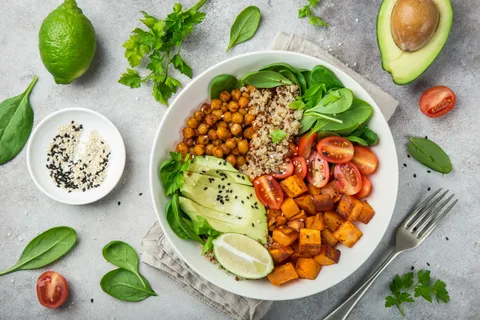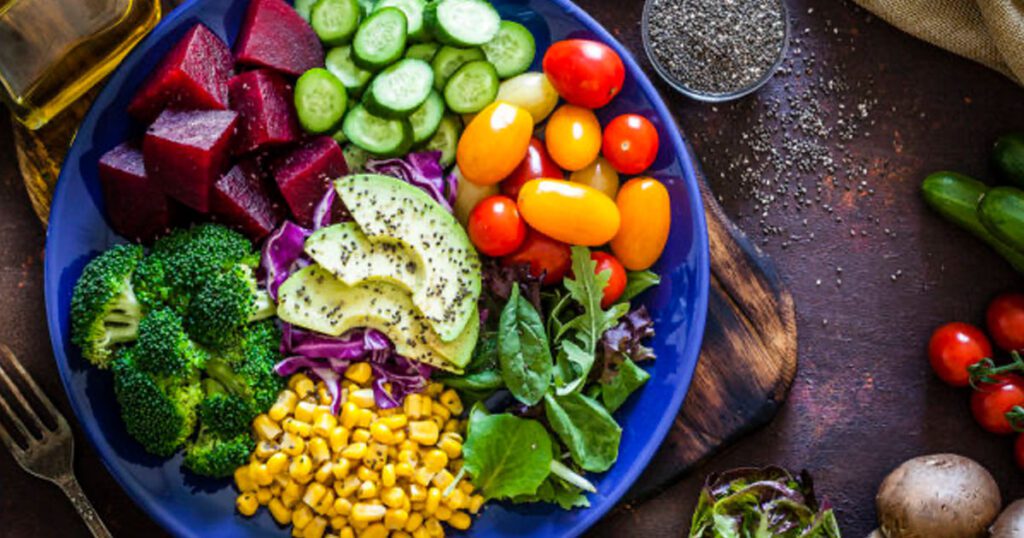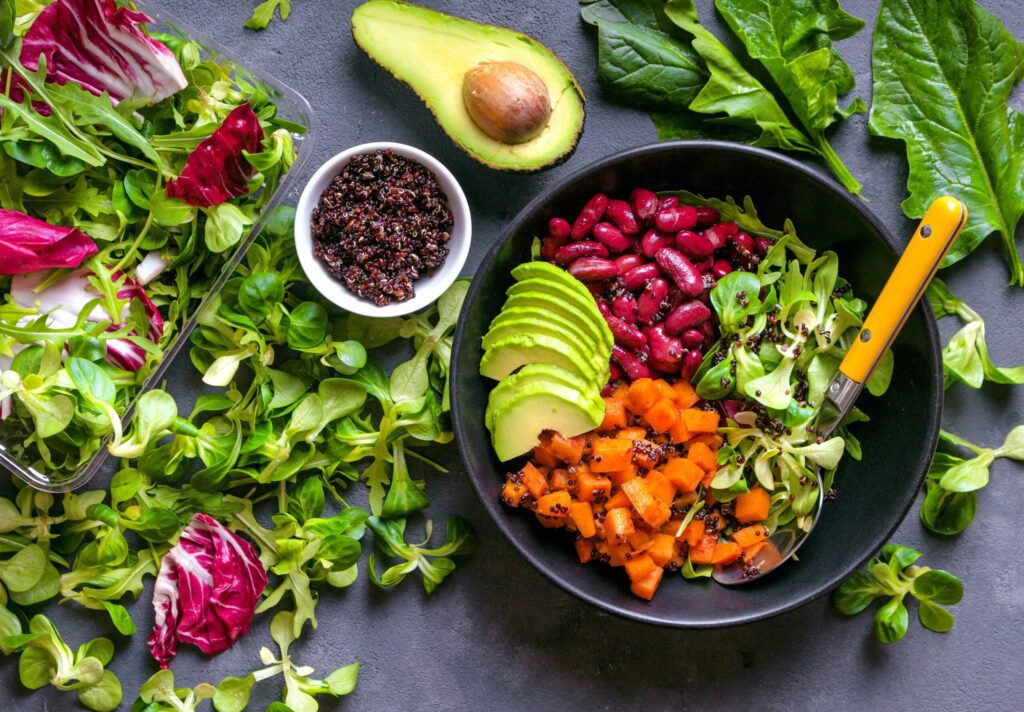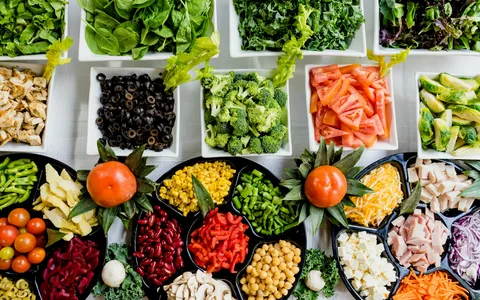Exploring Extreme Weight Loss Diets for Vegetarians

1. Introduction
We all know that losing weight is a difficult thing to do, and it is different for everybody. To some, shedding unwanted weight can seem like a Mozart-y masterpiece, while for others, children with hair, it can feel like reaching the summit of the Five Himalayas. In this essay, these extreme diets to lose weight are researched,
specifically for vegetarians. Other topics covered in the essay are types of extreme diets, the benefits and drawbacks of a vegetarian diet, and a case study of an individual who has undertaken an extreme diet to lose weight. Together, these topics become a tapestry of grotesque extremism against vegetarianism.
There are lots of people nowadays who choose vegetarianism as a lifestyle. The vegetarian population in the U.S. reached 3.3 million Americans (1% of the population) in 2016, a significant increase from only 1 million (0.1% of the population) in 1990.
Vegetarianism is defined as the practice of abstaining from the consumption of meat—even the flesh of any animal, poultry, beef, seafood or whatsoever. Reasons can range from health benefits 2, environmental sustainability 3, or social justice 4.
Some of many items included in the vegetarian diet are fruits, vegetables, nuts, seeds, oils, whole grains, legumes and dairy. Vegetarian diets have been associated with a variety of health advantages, including weight loss, a lower risk of heart disease, type 2 diabetes, and some cancers. Nevertheless, Vitamin, Mineral and Protein deficiency problems with vegetarianism 2.
Breakdown of Extreme Weight Loss Diets for Vegetarians
Extreme diets are a very common short-term solution for losing weight. They are naturally restrictive because they require people to only eat a small number of foods from various food groups or drastically reduce calorie intake. Extreme diets include different categories, such as: liquid diets, detox diets, no-carb diets and meal replacement diets.
On the contrary, these diets strictly limit two of three of the following components of nutrition — macronutrients, caloric intakes or variety of food. Most extreme diets yield temporary benefits, with the majority of shed pounds being gained back in the long-term.
Some examples of extreme diets that can be dangerous are increased risk of disordered eating and eating disorders, nutrient or energy deficiency, electrolyte imbalance, slowing of metabolism, binge eating/yo-yo dieting, constipation, and gallstones.
There are other ways of losing weight without extreme diets at the expense of nutrition and health (nutrient-rich foods with a high fiber content and low glycemic index carbohydrates, strict control of portions, regular exercise, drinking water, satiety after meals, and a recommendation to refrain from skipping meals). But recently, over many decades, extreme diets have become popular and have gained much attention.
2.1. Key Principles

The ultimate objective is to explore extreme weight loss diets within a vegetarian context. First, the fundamental elements underpinning extreme weight loss diets will be elucidated. These principles are crucial for grasping the rationale behind the efficacy and challenges associated with extreme weight loss diets.
Next, extreme weight loss diets will be examined and conceptualised within the context of vegetarianism. Finally, the insights gained from the aforementioned explorations will be critically analysed, indicating major research gaps and formulating key research questions.
Weight loss, or the process of losing excess body mass, is primarily driven by steeper energy deficits than energy intake 2. This energy deficit can be pursued through dietary practices and high physical activity. In kindred terms, body mass can be delineated as the long-term difference between energy intake and energy expenditure 3.
Two ensuing principles are widely accepted as paramount for extreme weight loss: a) total energy intake must decrease; and b) energy expenditure must increase. These principles are consistent with traditional models where body mass is viewed as a variable costly to manage and altered by exogenous perturbation of energy balance.
3. Vegetarianism and Weight Loss
Whether as healthy lifestyle choices, ethical values, or religious beliefs, vegetarianism is a diet free of meat that may exist in various forms. The respective amounts of omission of certain food categories lead to different types of vegetarianism, including lacto-vegetarianism and lacto-ovo-vegetarianism.
Lactovegetarianism excludes meat, fish, and eggs while allowing dairy products. Lacto-ovo-vegetarianism excludes meat and fish but allows dairy products and eggs. All types of vegetarianism, registered by a reliable condition, constitute a group of non-meat users. Epidemiological studies revealed that vegetarianism is inversely associated with BMI 4.
The vegetarian diet is widely acknowledged as a low-energy, high-fiber diet that greatly contributes to its effectiveness in weight management. The high contents of vegetables, fruits, whole grains, and beans in the vegetarian diet increase the intake of dietary fibres.
Dietary fibre is incapable of human digestion, boosting the amount and frequency of stool and enhancing the feeling of fullness while consuming less energy. The high content of micronutrients, such as vitamins and antioxidants, makes it possible to limit hunger.
The food components in vegetarianism may modulate gut micro-biota and regulate the hosts’ ghrelin and peptide YY secretion levels 5.
3.1. Benefits of a Vegetarian Diet
Vegetarianism is a type of diet in which humans do not eat meat, poultry, or fish. On the other hand, certain individuals even refuse to consume dairy products and eggs, adhering to a totally plant based diet referred to as veganism.
Because of this, a vegetarian diet can be helpful in reaching weight loss goals for a number of reasons. Vegetarians typically eat more fruit and vegetables and fewer cholesterol-rich meat and dairy products as compared to non-vegetarians. In addition, a vegetarian diet is generally lower in fat and is high in dietary fiber, which also contributes to satiety.
It was discovered that vegetarian diets have a lower energy density, which signifies that when they include grain-based foods, legumes, nuts, fruits, and vegetables, they contain fewer calories than a diet that includes meat. Those who never eat meat or dairy have a lighter average body mass index (BMI). Older studies suggest higher energy consumption from a non-vegetarian diet than a vegetarian diet, which represents 188–688 kcal/day (Hayashi, Iwakuma, & Nishimura 2014). Vegetarians tend to consume 100–500 kcal/day less than their non-vegetarian counterparts; furthermore, fat intake was 15–30% lower among women following a vegetarian diet (Hoop & Kearney 2017).
Physical Health: A vegetarian or vegan lifestyle helps to increase longevity, reduce risk of chronic disease, or lose weight. Epidemiological observations show that vegetarian diets are associated with a lower risk of hypertension, obesity, type 2 diabetes, some cancers, and coronary artery disease than omnivorous diets.
Another meta-analysis showed that vegetarians had a lower body mass index (BMI) compared to omnivores. Previous observational studies have indicated weight reduction with vegetarianity/veganity and a lowered BMI. But it is important to evaluate the beneficial or harmful effect of each food group and nutrients within the same diets.
A vegetarian diet may help to maintain healthy weight and BMI loss when calories are sufficient to meet expenditure. Conversely, in a few studies, vegetarian diets gained weight or BMI upsurges, which are most likely dose-related changes also based on race, sex, or region. More research is required to study vegetarian diets in different populations to know whether weight loss and BMI reduction due to a vegetarian diet are group-specific.
4. Popular Extreme Weight Loss Diets for Vegetarians

Diets can be generally classified as sedentary, active, balanced, controlled, unbalanced, conservative, extreme, repeated, non-repeated, and others. Diets can also be targeted either for the general population or specific sub-populations, like vegans.
Extreme and unbalanced vegetarian or vegan diets are very popular among people wanting to quickly lose weight. Here are some of the popular extreme weight loss diets for vegetarians:
1) Eat to Live Diet: It is a rigorous six-week diet with very little flexibility and more strictly enforced rules. After that, it can still be followed, but more flexibly as a “life plan” instead of strictly as a “diet.”. It advises a primarily plant-based diet with minimal consumption of animal products.
During the initial 6 week period of the Eat to Live diet plan, participants are advised not to consume any animal products at all. The six-week plan does not restrict raw or cooked non-starchy vegetables (most vegetables) and calls for unlimited consumption of vegetables, 1 cup of beans or legumes, and 4 servings of fruit daily.
It limits starchy vegetables, grains, nuts, seeds, and dried fruits and excludes refined grains, sugars, oils, and dairy. The ETL diet attributes obesity and poor health to the overconsumption of nutrients-poor foods such as refined sugars, grains, and oils.
2) Vegan Aggressive Weight Loss Diet: This is similar to the Eat to Live Diet but is a more extreme diet. It does not include any animal products. However, it is similar in that it is a very rigid plan, and after the initial period, dieters are advised to start with more flexibility.
On the condition that dieters follow the more flexible plan, diet termination means dropping from the rigid plan to the flexible plan and not terminating the diet altogether. The 6-week plan does not restrict raw or cooked non-starchy vegetables and allows unlimited non-starchy vegetables, 1 cup of beans or legumes, and 4 servings of fruit daily.
It limits starchy vegetables, grains, nuts, seeds, and dried fruits and excludes refined grains, sugars, oils, and dairy. The Vegan Aggressive Weight Loss Protocol (ETL-VAWL) attributes obesity and poor health to the overconsumption of nutrient-poor foods such as refined sugars, grains, and oils.
However, unlike the vegan diet, it does not include anything with high fructose corn syrup (HFCS). It also excludes fruit juice, ketchup, barbecue sauce, salad dressings, and any other food with added sugar. It allows unlimited salsa, salsa verde, RozVez salsa, and other salsas with raw vegetables only and no added corn starch.
3) The Plant-Based Diet: This is midway to achieving weight loss for vegetarians and vegans who are found to be more mindful of the foods they consume. This encompasses both the vegetarian and vegan diets.
It does not limit the consumption of calories, promotes a plant-based diet adopting foods rich in nutrients, or FRINs, and suggests avoiding foods rich in calories, or FRICs. The diet encourages whole grains, legumes, vegetables, fruits, nuts and seeds, herbs, and vegetable oils and excludes sugary beverages, potato chips, chocolate bars, and instant noodles.
Different from the plant-based diet, it allows other healthy foods such as low-fat dairy products (skimmed milk, yogurt, cheese) and eggs. It advises no more than two servings of dairy or eggs weekly and two cups of dairy or egg whites but no yolk. However, the exclusion of certain food groups, such as fatty fish or omega-3 supplements, may pose a greater risk of essential fatty acid deficiency and heart disease.
4.1. Ketogenic Diet
This section is dedicated to the ketogenic diet for extreme weight loss among vegetarians. The reader will find out how it works, its purpose, and the vegetarian side of it.
The Ketogenic Diet (KD), a diet that initiates a state of ketosis, has gained attention as a potential metabolic treatment. Its favourable effects on caloric intake, body weight, lipid parameters, glycemic indices, and insulin sensitivity render it a therapeutic option in metabolic syndrome, obesity, and obese type 2 diabetes 6.
The KD map from the diabetes perspective was analysed to identify the intricate network of pathways involved in finding the possible effects of KD in diabetes. Among the different pathways, the insulin resistance pathway showed the strongest relationship with KD.
Several studies have been done to determine the effects of a KD and its consequent metabolic changes in the physiology of the body under different diabetic conditions. Particular interest has been focused on pharmacological approaches such as sodium glucose co-transporter 2 (SGLT2) inhibitors, particularly empagliflozin and canagliflozin. SGLT2 inhibitors decrease hyperglycemia in patients with type 2 diabetes by promoting weight loss and having cardiovascular benefits.
Even though the ketogenic diet may be useful as part of the treatment of various diseases, the more common situation for the general practitioner is the use of KD by patients in order to lose weight. With reference to obesity interventions occurring in publicly funded units or departments, diet is one of the more controversial issues, and many different types have been advocated to promote weight loss.
The most commonly accepted dietary strategy is based on relatively high levels of carbohydrates and low fat content, but according to some studies, these low fat diets yield only modest weight losses and suffer from low long-term compliance issues.
With a ‘calories in, calories out’ philosophy, the basic reasoning behind such dieting methods is that lowering fat intake should stimulate a consequent fat body mass decrease. However, the adherence of obese individuals to high- or low-fat nutrition is often a problem. The majority of those above have been shown to have dietary preferences for foods with a high fat content.
4.2. Intermittent Fasting
A prominent extreme weight loss diet, intermittent fasting (IF) or time-restricted eating (TRE), is a behavioural dietary strategy that alternates periods of eating and fasting and is getting a lot of attention for weight loss.
A variety of IF programmes are available, but they can be broadly divided into two overarching categories: (1) alternate-day fasting (ADF), in which fasting days are alternated with ad libitum eating days; or (2) modified variants of ADF that limit energy consumption to between 10 and 25% of maintenance needs on fasting days.
This 24-h fast/feast cycle can be applied in a very tight manner with no control over intake on feeding days or a more sensorily-assisted approach. For example, in ADF studies, food is restricted for 1 day, followed by 24-hour ad libitum feeding, similar to what is done in the 5:2 diet.
IF’s design can also resemble “squeeze it in” or “kitchen’s closed” approaches to dieting, in which individuals may skip breakfast or have shorter windows of time in which to consume energy daily. Both scheduling variations of IF and the fixed delivery of food challenge assumptions that must be met for the caloric intake to be statistically comparable.
Weight loss is frequently achieved by creating an energy deficit; however, in IF models, restrictions lie in when food is consumed rather than how much. Therefore, the degree of restriction may not be the same across eating-scheduling variations, and behaviours such as overeating may negate weight loss.
Still, studies done while comparing absolute caloric intakes found no differential effects on weight loss between IF models and daily caloric restriction (DCR) 9. IF models only had lesser reductions in weight compared to ADF approaches, which had 21% reductions in weight loss trials. Nevertheless, the scientific community has embraced these dietary interventions as an alternative to tougher DCR plans for the treatment of obesity and associated health conditions.
Taken together in the vegetarian context, intermittent fasting interventions in which participants alternate between fasting and eating days or consume a specific amount of daily energy may not be as common as a strict form of fasting. The absence of empirical studies examining IF with plant-based diets deters its comprehensive understanding of the subject within this grouping.
Also Read: Best ways to reduce weight in one month

5. Safety Considerations and Risks
Health experts agree that extreme weight loss diets are ineffective and that a gradual weight loss of half a kg or 1 lb in weight each week is ideal for long-term success. Such diets, however, can seem attractive alternatives to what may feel like a long, slow struggle with food.
Exploring extreme measures in weight loss diets is wise in what these diets offer, but even wiser is a careful consideration of the pitfalls. When used responsibly, diets can bring about fantasised outcomes, but when used as widespread fads, they have disastrous health implications for the population as a whole.
Extreme weight loss diets include such measures as the cabbage soup diet, the cereal diet, the bun diet, and the famous banana and skimmed milk diet. Briefly, and with details omitted so that the temptation is sabotaged, each diet includes the consumption of some specific food item and none or little else.
Thus, with the cabbage soup diet, a large quantity of cabbage soup is eaten over a week and nothing else or very little else, and this is accompanied by fast weight loss. Alternatively, the cereal diet sees shreddies and milk the only thing consumed; similarly for the bun diet; and similarly again for the banana and skimmed milk diet.
A hormone purportedly to decrease appetite has also entered the scene as an extreme method in weight loss diets. Health consumers inject themselves with this hormone and wait for the perceived result of a weighing scale’s downward ticking and continue to wait, in fact, until the prescribed course is over, sometimes without it ever coming.
Extreme weight loss diets need not all be extreme diets. The origins of each need for investment if any government is to legislate against potentially dangerous extreme weight loss diets and food products. In several cases, it appears that celebrity endorsement combined with marketing savvy and financial resources have been necessary to get these extreme diets off the ground, soaring from basement anonymity to ubiquitous publishing, media, and advertising exposure in just months.
References:
1. Greville-Harris M. What are People’s Experiences of Orthorexia Nervosa, as Described in Online Blogs?. 2018. [PDF]
2. Economou A. Eating for wellness: Development, analysis, comparison and discussion of meal plans based on the Mediterranean and vegetarian dietary patterns. 2020. osf.io
3. G. Engel M, J. Kern H, Thomas Brenna J, H. Mitmesser S. Micronutrient Gaps in Three Commercial Weight-Loss Diet Plans. 2018. ncbi.nlm.nih.gov
4. Fontes T, Monteiro Rodrigues L, Ferreira-Pêgo C. Comparison between Different Groups of Vegetarianism and Its Associations with Body Composition: A Literature Review from 2015 to 2021. 2022. ncbi.nlm.nih.gov
5. Siregar E. Assessing Plant-Based Food Lifestyle to Reduce Obesity Risk. 2017. [PDF]
6. Gupta L, Khandelwal D, Kalra S, Gupta P et al. Ketogenic diet in endocrine disorders: Current perspectives. 2017. ncbi.nlm.nih.gov
7. Paoli A. Ketogenic Diet for Obesity: Friend or Foe?. 2014. ncbi.nlm.nih.gov
8. A. Aragon A, J. Schoenfeld B. Does Timing Matter? A Narrative Review of Intermittent Fasting Variants and Their Effects on Bodyweight and Body Composition. 2022. ncbi.nlm.nih.gov
9. Song DK, Kim YW. Beneficial effects of intermittent fasting: a narrative review. 2022. ncbi.nlm.nih.gov
10. A. Forestell C. Flexitarian Diet and Weight Control: Healthy or Risky Eating Behavior?. 2018. ncbi.nlm.nih.gov